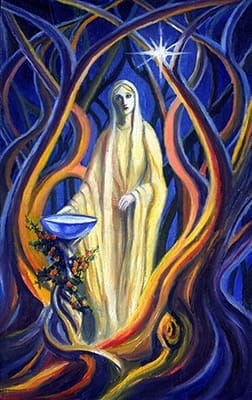A reluctant pilgrim at Lourdes
By Lorraine V. Murray, Commentary | Published February 11, 2019
I was an English major in college when I first read the stories of Southern writer Flannery O’Connor, who lived most of her life on Andalusia Farm in Milledgeville. In her humble room with her desk turned away from the window to avoid distractions, she wrote some of the most memorable tales of the 20th century.
She shaped larger-than-life figures like an escaped convict who engages in a theological discussion with a grandmother before shooting her, a highly educated nihilist who meets her match in a young Bible salesman and a self-satisfied, bigoted woman who receives a devastating message from a stranger.
 In class we poked and prodded the symbols, but my professors failed to mention that she certainly didn’t use violence gratuitously. Instead, as I learned years later, when I read her letters, she used shocking moments to wake up readers who no longer believed in God, sin or the afterlife.
In class we poked and prodded the symbols, but my professors failed to mention that she certainly didn’t use violence gratuitously. Instead, as I learned years later, when I read her letters, she used shocking moments to wake up readers who no longer believed in God, sin or the afterlife.
Her characters struggle with pride, greed, lust and other sins in our fallen world, which she called “territory largely inhabited by the devil.” They are also offered merciful grace that can redeem them from their darkness.
A devoted Catholic, she herself had received an outpouring of grace as she battled lupus, which she contracted when she was 25. As the disease slowly crippled her, she had to use crutches, but she accepted her suffering as the Cross of Christ.
Flannery was especially devoted to the Blessed Mother and was well aware of the importance of Lourdes, France, in the life of the Church. On Feb. 11, 1858, the Virgin Mary appeared for the first time to a peasant girl, Bernadette Soubirous, in the grotto of Massabielle, near Lourdes.
The child kept returning to the site, and on a subsequent visit, Mary instructed her to drink from a fountain in the grotto. No fountain then existed, but when the child began digging, a spring started to flow, and has continued flowing to this day with water reputed to have healing powers.
In 1957, Flannery’s elderly, well-to-do cousin offered to treat Flannery and her mother to a diocesan pilgrimage that would include Lourdes. Although she hated traveling because she wasn’t keen on crowds and her crutches made journeys arduous, Flannery reluctantly agreed to take the trip.
Still, she wasn’t shy about sharing her misgivings with friends, admitting to one that she’d rather die for her religion than bathe in public.
When they arrived at Lourdes, Flannery was shocked at what she called a beautiful village “pockmarked with religious junk shops.” Despite this dismal first impression, she decided to bathe at the grotto, and arrived early in the morning to avoid the crowds.
As she later reported, she was relieved to discover that each person donned a sack for modesty’s sake before entering the water. But she was quite dismayed when she realized that her garment had just been worn by the person ahead of her.
Flannery wasn’t praying for physical healing when she immersed herself in the water: “I prayed for my creative bones rather than the other kind.”
A few months later, doctors reported that her hipbone had strengthened, and although she thanked God for this improvement, she was more excited about her ability to make significant headway in a novel that she’d been working on for years.
Flannery was hospitalized numerous times toward the end of her life as she battled infections related to lupus, but she continued working on her stories until her death on Aug. 3, 1964.
Her stories were largely misunderstood during her lifetime, but she received the National Book Award posthumously. As her editor was preparing to accept this honor, another writer asked, “Do you think she deserves the award? After all, she was such a Roman Catholic.”
This man didn’t realize it, but he had composed the perfect epitaph for a brilliant writer whose life and works shine with God’s healing, merciful grace.
Lorraine is the author of “The Abbess of Andalusia: The Spiritual Journey of Flannery O’Connor.” She has written a study guide to accompany a video about O’Connor, which is part of Bishop Barron’s series “Catholicism: The Pivotal Players.” Artwork is by Lorraine’s beloved late husband, Jef Murray.